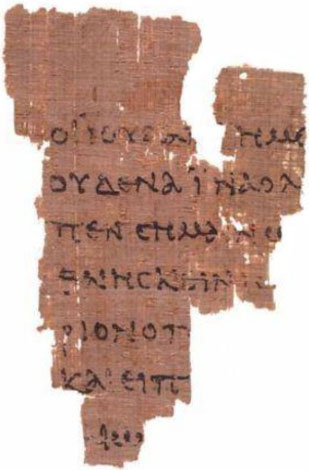Navigating the New Testament

Many religious books were written during the early years of the church, but over time, people of faith identified one group of books as being different from the rest. This group of books became our New Testament.
Books were included in this group because:
- they had the authority of the apostles,
- they had been accepted as authoritative by all parts of the church, and
- they had been recognized as being inspired by the Holy Spirit.
An important skill that all Christians can benefit from is being able to find your way through the books of the Bible. As our New Testament is published today it is made up of twenty-seven books.
Some Christian Churches recognize an additional set of books called the Apocrypha or Deuterocanonical books. We respect these books but do not put them in the same category as the sixty-six books of our Old and New Testaments.
It is probably good to note here that the chapter and verse divisions of the Bible only appeared long after the books were written. The division of the books of the Bible into chapters was probably derived from work done by Stephen Langton (d.1228). He was a professor at the University of Paris and later became the Archbishop of Canterbury in England. The New Testament chapters were subdivided in 1551 by Robert Estienne, a printer. It is important to remember that these chapter and verse divisions are merely for our convenience and sometimes do not always reflect the actual breaks in the text. Read more about the history of these subdivisions here.
The New Testament
Within the New Testament there are twenty-seven books. We group them into four categories with a few sub-categories.
You may notice that the letter to the Hebrews is listed among the General Epistles rather than among the writings of Paul. The letters that most people attribute to Paul are listed in order longest to shortest (Romans to Philemon) and then the relatively long letter to the Hebrews is placed after this grouping. Some scholars today believe this book was written by Paul, but most do not.
Four Gospels |
Three Synoptic |
Matthew |
|
John |
|||
One Book of History |
The Acts |
||
Twenty-One |
Thirteen Epistles |
Romans |
|
Eight General |
Hebrews |
||
One Book of Prophecy |
The Book |
||
Learning the Order of the Books of the New Testament
A good way to learn the order of the New Testament books is to sing them to the tune of the gospel song "Bring Them In."
Printable sheet music for The Books of the New Testament
Matthew and Mark and Luke and John,
Acts, Romans, and two Corinthians,
Galatians, Ephesians, Philippians,
Colossians and two Thessalonians,
First Timothy, Second Timothy,
Titus, Philemon, Hebrews, and James,
First Peter, Second Peter,
Three Johns, Jude, and Revelation.